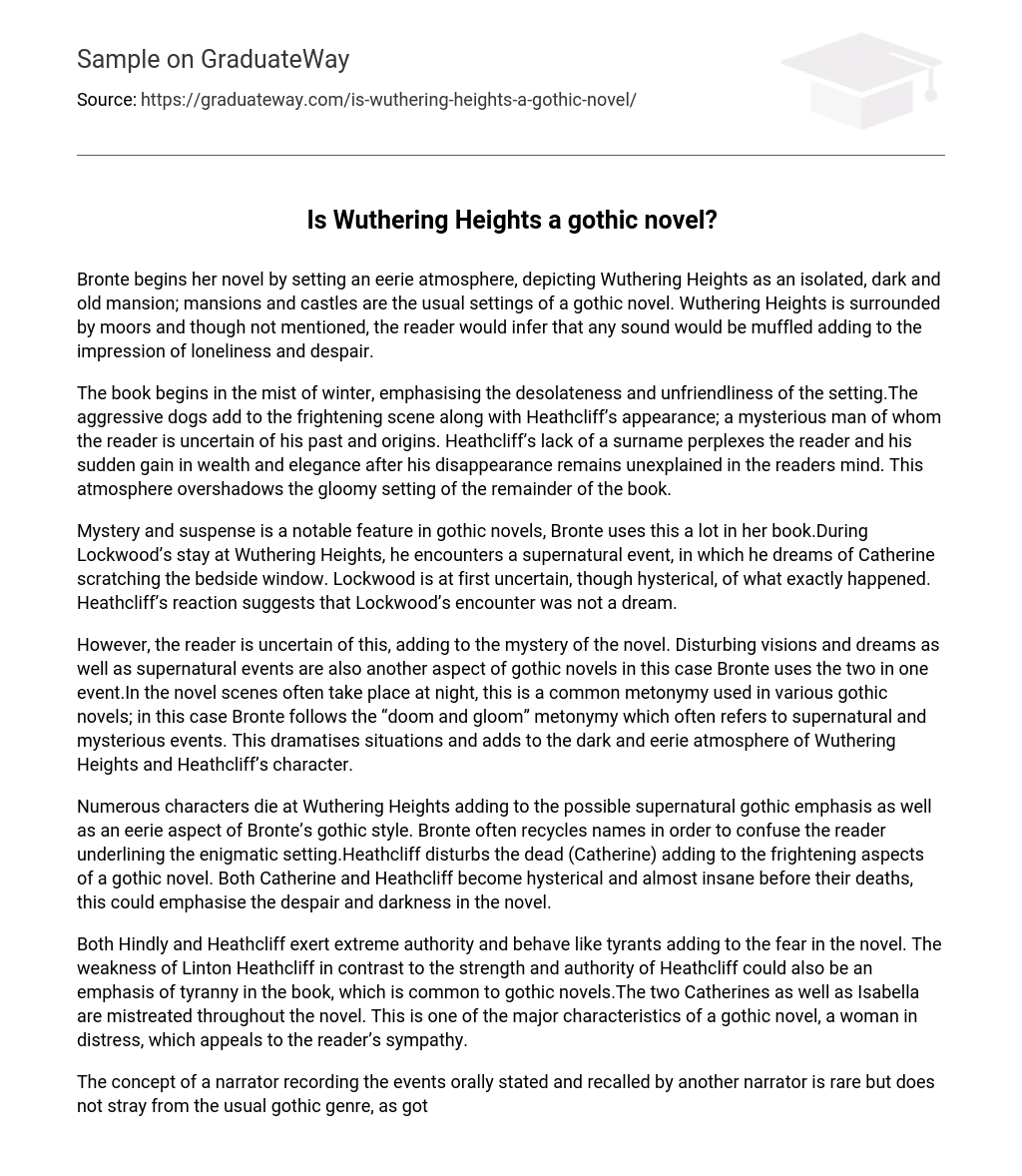Bronte commences her novel by creating a haunting ambiance. She depicts Wuthering Heights as a desolate and ancient mansion, typical of gothic novels. The mansion is enveloped by moors, which hints at the suffocation of any sound, further enhancing the sense of solitude and hopelessness.
The book starts during winter, highlighting the desolate and unfriendly nature of the setting. The menacing dogs contribute to the eerie scene, as does the enigmatic figure of Heathcliff, whose past and origins are uncertain to the reader. The absence of a surname for Heathcliff puzzles the reader, as does his sudden acquisition of wealth and refinement after his disappearance. This atmosphere casts a shadow over the gloomy setting that persists throughout the rest of the book.
The presence of mystery and suspense is a prominent characteristic in gothic literature, which is also heavily utilized by Bronte in her novel. In the course of Lockwood’s visit to Wuthering Heights, he experiences a paranormal incident, during which he dreams about Catherine scratching the window near his bed. Initially, Lockwood is uncertain and agitated about the nature of the event. However, Heathcliff’s response implies that what Lockwood witnessed was not merely a dream.
However, the uncertainty surrounding whether the reader can trust the events in the novel contributes to its mysterious nature. Additionally, Bronte incorporates disturbing visions, dreams, and supernatural occurrences as another element of gothic novels, combining them into a single event. The novel frequently depicts scenes that occur during nighttime, which is a common motif in gothic literature. In this case, Bronte employs the metonymy of “doom and gloom,” often associated with supernatural and mysterious happenings. This effectively heightens the intensity of situations and contributes to the sinister and eerie ambiance of both Wuthering Heights and Heathcliff’s character.
Wuthering Heights incorporates numerous character deaths that contribute to a potential focus on supernatural elements and an unsettling atmosphere characteristic of Bronte’s gothic style. Bronte frequently repeats names, creating confusion among readers and highlighting the enigmatic setting. Heathcliff’s actions involving the deceased Catherine further enhance the terrifying aspects commonly found in gothic novels. The characters of Catherine and Heathcliff experience heightened states of hysteria and near madness prior to their demise, underscoring the prevailing despair and darkness throughout the novel.
In the novel, both Hindly and Heathcliff exhibit extreme authoritarian behavior, behaving like tyrants, which contributes to the pervasive sense of fear. Additionally, the stark contrast between Linton Heathcliff’s weakness and the strength and authority demonstrated by Heathcliff emphasizes the theme of tyranny that is prevalent in gothic novels. All three female characters – the two Catherines and Isabella – are subjected to mistreatment throughout the storyline, a key characteristic of gothic narratives that elicits sympathy from readers.
The idea of one narrator orally recounting events as told by another narrator is uncommon but still fits within the standard gothic genre, which frequently features sentimental narration. Bronte employs typical gothic techniques in her novel to capture the reader’s interest.





